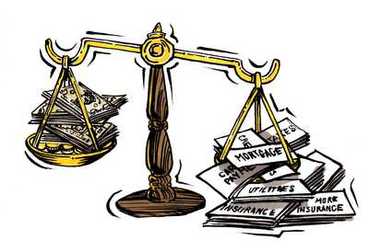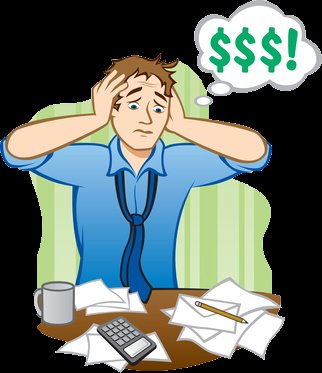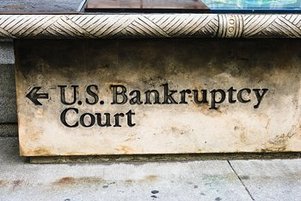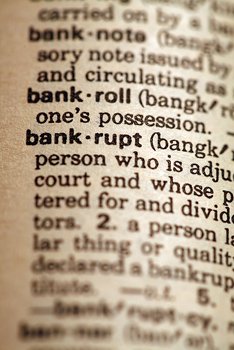 Most businesses owe money in one way or the other. It can be through the start up loan that helped turn the business idea into a reality. It can be through the payables that are scheduled to be paid off in 30, 60 or 90 days after the purchase had been made or the service given. Whatever it is, debt will always be something that entrepreneurs should know how to handle. In some cases, a severe economic turn, a bad investment or a drastic change in the market’s perspective can jeopardize the financial state of a small business. This could leave the business owner with more debt and overhead to pay compared to the revenues coming in. If this is the scenario, what are the options of the small business to get out of debt? One of the first options that entrepreneurs consider is debt financing. It simply implies that the small business will get financial aid, either from a bank or any financial institution that is in the business of doing such transactions. Some finance experts will say that a debt taken to help grow one’s personal wealth is a smart debt to take. If it will help you business survive a financial crisis and keep it away from bankruptcy, then it is worth a shot. To help you decide if this is the right course, here are some benefits to debt financing. The first and probably the best thing about this small business debt relief is you get to stay as the owner of your company. If you will not file for bankruptcy, you keep the company open and you have the chance to revive your profits. You retain full control in your business. Another benefit is you stay as the primary decision maker when it comes to where the money you loaned will be spent. You can decide to solely spend it on your payables or you can set it aside for your monthly overhead. Or you can split it between the two. Of course, that will have to be thought out carefully in your debt relief plan and not just something that you decide on a whim. Yet another reason for you to consider debt financing is the fact that your accountability to the lender will only be temporary. As soon as you finish paying off the loan amount, your transaction ends. The lender will have no interest as to what the loan have done to your company. If it led to a hefty amount of profit or got your business to skyrocket its profits, all those will be on you. Only you and the company will enjoy the fruits of that debt financing. Lastly, this type of small business debt relief will allow you to boost the credit rating of your company. At least, this will happen if you pay off your debt diligently. Despite the huge amount of debt, if you are able to keep up with your payments, that will lead to a good financial history for the business. That means you can get a good deal out of another loan in case your business will need it again.
 The means test gave bankruptcy a whole new meaning. Before its implementation, bankruptcy meant not having to pay for any debt that you owe. At least, that will be the case when the court finds that you are in a real financial crisis. They will view all your assets and see which ones can be liquidated. That involves the process of selling off valuable assets and the proceeds go to your creditors. Anything that is not paid off will be discharged (or forgiven). During a financial crisis, some people just want to get out of it - regardless if there will be severe credit score implications. They file for bankruptcy just to get it over and done with. The government took notice of this and came up with the means test to separate the abusive bankruptcy filers from those who are in a real crisis. This test lists a series of qualifications that should be met. Now, people have two bankruptcies to consider. The first one is Chapter 7 and it is similar to what was described in the beginning of this article. The other type is known as Chapter 13. This is type of bankruptcy involves a repayment scheme that is similar to debt settlement - minus the deliberate defaulting on payments. It is also something that both you and the creditors will submit to. The court decides everything and the both of you will have no power over the court ruling. The bankruptcy court will look over your finances and your debts and come up with a repayment plan that you have to complete. Once completed, the rest of what you owe will be forgiven and you will be debt free. To decide which bankruptcy you are qualified for, you need to go through the means test. The initial scrutiny will be on your debts. It will be done by a court appointed official known as the trustee. There are debts can cannot be covered by bankruptcy and the trustee will identify them. Then your income will be checked. If your income is below the median salary range of the State where the bankruptcy petition was filed, then you qualify for Chapter 7. If not, then you will be scrutinized further. You need to deduct your basic expenses from your income. The income has to be the average of what you received for the past 6 months. For the expenses, you need to know that there is a standard list of what you are allowed to deduct from your income. The expenses for your yacht may not be included in this list. The difference will be called your disposable income. If there is none left, then you may find that you still qualify for Chapter 7. But if the amount is significant enough, then you will end up with a Chapter 13 filing. These are your options for bankruptcy, but know that you have other alternatives to get out of debt. You need to consider that there are debt consolidation options that you can look into. These include debt management, debt consolidation loans and debt settlement. They all have specific qualifications too but they will their effects will not be as destructive on your credit score as those of bankruptcy.
 What do you do when your income is not enough to cover both your basic needs and your debt payments? Do you run away from all your problems and give up? Although you may feel like giving up and just run away from all your debt problems, you need to face the mess that you made. Ignoring your debts will not make things better too. This is one problem that you need to act on to be able to solve it. If your income is not enough to cover your basic expenses and all your debts, one of them will have to change. It’s either you increase your income, you lessen your expenses or your reduce your debts. For some people, the first two is their first option. But then again, what if you did both and it is still not enough? Fortunately, there are debt reduction options for people who need it: debt settlement and bankruptcy. The first option is debt settlement. Of the two, this is the more prominent option in terms of debt reduction. The fact is it does not have that much negative effect on the debtor’s credit score - unlike bankruptcy. You will begin by telling your creditor that you are in a financial crisis. To prove this, you will deliberately default on your payments. Instead of sending the amount to your creditors, you will place it in a separate account where you will grow it to be your settlement fund. This is what you will offer your creditors. When the 6th month or so comes in, a collector will take over and will be more aggressive in their efforts to get you to pay. The key to sway the creditor/collector to agree to settle is by telling them that you are on the brink of bankruptcy. Creditors, especially credit card companies are among the last to be given anything when a debtor files for bankruptcy. So you can very well expect that they will be hesitant to go to bankruptcy. If they agree to your request, you will pay the settlement amount and the rest of your debts will be forgiven. Your score will suffer because of the deliberate defaulting on payments. While there is a significant debt reduction, there are instances wherein people opt to avail of bankruptcy instead of debt settlement. This is despite the credit score implications that are the worst among all the other debt relief options. This is when they don’t even have enough to pay for the settlement fund. There are two ways for it to go: Chapter 7 and Chapter 13. The first is the option that most people want to get because it leads to the complete discharge of their debts. If you have any valuable asset, the court will decide which should be liquidated and distributed to your creditors. Anything that cannot be covered will be forgiven and no one will come after you again for it. Chapter 13 is similar to debt settlement because there is a repayment plan that the court will order you to complete. Once this is fulfilled, the rest of the debt will be forgiven. The court will decide which bankruptcy you will file depending on the means test. For instance, if your salary is above the median range in the State where you filed bankruptcy, then your chances of filing for Chapter 13 is high. These options will get you out of debt in 4 years or less. If this is your only option, do not worry too much about your credit score. While it will be destroyed, the important thing is to get out of debt. You can always rebuild your credit score. Just make sure that you will start making smarter financial decisions so that you will stay out of debt for good.
 Before you can actually choose the type of debt relief that you will use for your credit problems, it is a wise move to know what you can afford to pay first. While financial analysis is not always a requirement, it should be practiced nevertheless at the beginning of any debt relief effort. You have to start taking charge of your finances not just to grow your debt payment fund but also to make sure you stay out of it. As you make a personal financial analysis prior to debt relief, there are only three categories that you can fall into. Financial Capability 1: With enough money to spend on basic necessities and debt payments. This is probably the luckiest among the three categories. This means the financial capability of the debtor is big enough to cover their daily needs plus the minimum payments of their various credit accounts. While it is fortunate that your income is enough to cover all your financial obligations, you will not be qualified for any debt reduction. You are technically not in a financial crisis even though your debts have spiraled out of proportion. In this case, your debt relief choice is debt consolidation. You can actually try to pay off your debts using the traditional way. This will ensure that your credit score will not suffer as you get out of debt. But if you still want to opt for either of the two types of debt consolidation, debt management or debt consolidation loans, then you may be qualified to do so. In both cases, the debtor will benefit from lower monthly dues because their payment term will be stretched over a longer period. While this has a negative impact on the credit score, it will only be minimal and it will improve as soon as the debtor starts paying off their debt. Financial Capability 2: With money for basic necessities but not enough for debt payments.In the next category, the scenario is not as good as the first. In this case, the debtor does have enough to cover their basic necessities but lacks funds for debt payments. In most cases, people under this category has a steady income but unfortunately, it is not enough to cover for everything that they need. If the deficit for debt payments is only minimal, the debtor can try to increase their income or lower their expenses so be able to afford the options provided in the previous scenario. But if the needed funds are too big, the option for debt relief is debt settlement. Under this program, the debtor will negotiate with the creditor for a settlement amount that is lower than the balance of the debt. If they agree, the debtor will pay for that amount and the rest of the debt is forgiven. The drawback for this is the negative impact on the credit score and the tax implications on the forgiven amount. However, the savings can be significant so a lot of people proceed despite the consequences. Financial Capability 3: With barely enough to pay for basic necessities and no funds for debt payments.This is the worst scenario for anyone. In most cases, people under this category have low paying jobs or even none at all. This type of financial situation means they are living on a tight budget and they has to make changes in their lifestyle just to survive. Usually, there is nothing left to pay for credit obligations. The only debt relief option for this situation is bankruptcy. The debtor will have to go through a means test that will determine if they are eligible for Chapter 7 or Chapter 13. In the former, their debts are totally discharged - but only after valuable assets have been liquidated. In the latter, they are subjected to a low repayment plan which when completed, will prompt the discharge of any balance on their credit. This is probably the worst option for anyone because of the severe impact on the credit score. Consider carefully where your current finances belong to before you decide on a debt relief program. That way, you can choose the best option that your finances can handle.
 People who are in debt usually want the quickest way out of it. When we are talking about the fastest way to solve your debt problems, we usually think about bankruptcy. While it can get you out of debt, bankruptcy will not really solve your problems. You may find your debts discharged, but you are far from the financial freedom that should be associated with the elimination of your credit obligations. One of the most prominent (and well advertised) bankruptcy disadvantage is its effect on your credit score. Your score will immediately go down 200 points or more. Not only that, the stigma of bankruptcy will stay in your report for the next 10 years. If you had plans of applying for loan to buy your own home or start up a business, you can say goodbye to that. No lender will come near you to provide you with that financial assistance. If you do find one who will entertain your application, they will most likely give you a high interest rate. Your bankruptcy history will make you a high risk borrower and that results in a higher than the usual interest. Another effect of bankruptcy is you will not learn your lesson. While paying off your debts the traditional way is hard, you get to learn important financial management habits along the way. If your debts are discharged, you don’t get to feel the full impact of your debt responsibility. The chances of you getting back in debt is possible. When you file for bankruptcy, you are also endangering your personal assets. You can end up with a Chapter 7 or a Chapter 13 bankruptcy. With the former, your debts are discharged but if you have valuable assets, the court may request to have them liquidated. If you land on a Chapter 13 bankruptcy, your debts will not be discharged and you will be asked to pay off a portion of your debts through a repayment plan. In this case, you still need to pay your debts and end up with the same credit damage. These are only some of the things that you need to know about bankruptcy. Your financial future will suffer greatly if you file for it. There are debt relief alternatives that can work on your current financial capabilities without the destructive effect on your reputation - at least in the financial world. First option involves growing your income or lowering your expenses so you can increase your debt payment fund. Check your minimum payments and see how much is lacking to cover your debts. Use that as your goal and come up with a plan to reach it. Most of the time, people combine lowering expenses and increasing their income to help grow this fund. If it proves to be a futile effort, choose among debt relief options that will allow lower monthly payments. You can enrol in a debt management program that will stretch your payments to lead to lower payments. You can opt for debt settlement that will involve negotiating with your creditors to agree to a settlement amount. When this amount is paid off, the rest of the debt is forgiven. All of these bankruptcy alternatives may be better but you need to study your finances carefully because there are cases wherein bankruptcy is the only option. Consult a debt expert if you can. You may find their expertise helpful in shedding light to your debt woes.
 If you own a small business, you can expect a couple of debts to haunt you. This is a normal occurrence. From the moment you get a start up loan for the business, you are already in debt. The only difference with consumer debt is that any loan that you take for you business should help pay for itself. Your business generates revenues and any loan you take should be to improve that money making quality. However, there are instances wherein the debt payments can no longer be supported by the revenues. That means you have to start considering debt relief options. There are government programs that you can look into. The great thing about these programs is the fact that you can get lower than the usual interest rates. You can search through Grants.gov to provide you with options on what grants you can avail from the Federal government. These include mostly small business startup loans but they can also provide guarantees for debt assistance loans. Part of the ARRA or American Recovery and Reinvestment Act of 2009 states that tax relief are available for companies who are trying to cut back losses in order to cope with mounting debt. This is something that small business owners may want to look into. Apart from that, it provided over $700 million in funds for SBA loans. You should also know that whatever you can use in consumer debt can be applied in small business too. You can opt for debt consolidation loans or debt settlement. Of course, bankruptcy is also an option but this should be your last resort. All of these small business debt relief options can be effective for certain financial situations. In debt consolidation loans, the idea remains the same - you take out a big loan to cover for your other credit obligations. The idea is to stretch your loan longer so you get to pay smaller monthly payments. As your debt payment becomes smaller, you free up more funds to invest them in campaigns and strategies that will help increase the revenues of your business. Debt settlement is also an option that you can look into. Since a lot of small business entrepreneurs function as sole proprietors, they can qualify either as individual consumers or as a business owner. They get to enroll in a program wherein the debt settlement expert will review the financial capabilities of the business to consider how much it can pay their debts while having enough to cover for the overhead expenses. They will negotiate with the creditors on their behalf so the debt is reduced and the penalty charges are waived off. The last option that small business owners face is bankruptcy. There is a specific chapter known as the Chapter 11 bankruptcy that entrepreneurs can file. It is also known as the Reorganization bankruptcy and it will allow small businesses in debt to get loans with favorable interest rates. These loans will help them stay afloat. It is no longer true that filing for bankruptcy will result in the closure of the company. It is important that you approach bankruptcy carefully as it does pose a significant impact on one’s credit score - specially for sole proprietorship businesses. Consult a bankruptcy lawyer before you proceed so you can identify if this is the best course for you to take. Ultimately, you should know that debt relief is not enough to solve your problem. You need to check your business processes, audit financial books and see through your products and services to determine why your revenues cannot cover both overhead expenses and debt payments. You may have to consider revising some areas in your company to avoid being in the same situation again.
 Before you finalize your debt relief option, you need to know what they are and how they are different from each other. Among the many options, debt settlement and the Chapter 13 bankruptcy is closely related to each other. Debt settlement involves negotiating with creditor to agree to a settlement amount. When this amount is paid off, the rest of the debt is forgiven. If you are wondering how that is similar to bankruptcy, then you need to read on further. You may think that bankruptcy only involves liquidating assets and having the whole debt discharged. That is true, but only for Chapter 7 bankruptcy. Chapter 13 involves a repayment scheme that the debtor will have to pay in order for the rest of their debt discharged. The emergence of this part of the bankruptcy law came at a time when this debt relief was being abused. Now, a means test is in effect wherein the person filing for bankruptcy will be analyzed to see if they qualify for Chapter 7 or Chapter 13. Those who earn above the average median salary of the State will immediately be directed to the latter. The only thing that possibly benefits the filer of Chapter 13 is they are able to protect their assets. By submitting to the repayment scheme, their personal properties are protected from liquidation - something that is not possible in Chapter 7. In both cases, there is a need to be in a real financial crisis to be able to qualify for these two debt relief options. The debtors should also have a high debt to income ratio. In most cases, they have minimal income coming in. Probably the best similarity between the two is that the debtor only pays for a portion of the outstanding balance. After that, the debt is forgiven. The difference lies in a couple of factors. In debt settlement, the whole scheme is dependent on the creditor. In bankruptcy, it depends on the bankruptcy courts. They dictate how much you have to pay and when it has to be paid. It is usually 30% to 50% of the original balance. In bankruptcy, this is more likely to come to pass. In settlement, you are at the mercy of the creditor. Another difference lies in the credit consequences. Bankruptcy is notorious for its effects on one’s credit report. That is not an exaggeration. That taint on your record will remain for the next 10 years and your credit score will go down by a couple of hundred points. In a settlement, the record will be tarnished for only 7 years and the least number of points that you will lose will be around 50 or so. That will be greater the longer you reach a settlement and default on payments. The time frame of the repayment plan will also vary. In bankruptcy, it can stretch to 5 years - making payments smaller every month. In debt settlement, the term is only between 2-4 years. If you want to get out of debt faster, this is will make it happen for you. Privacy is another difference between the two. Your bankruptcy filing will become a public record. Debt settlement remains to be a private matter. The only indication that you went into this debt relief option is in your credit history wherein your debt will be tagged as “settled”. Lastly, the fees are different too. The settlement service fee is dependent on the amount that will be forgiven. The average can reach a high of $5,000. If your debts are high, then the same goes for the fees. Chapter 13 is usually $3,000 tops. Debt settlement is a great bankruptcy alternative but you need to consider which is best for you. Choose which among the two will serve your purpose best. It may help to consider the aftermath of each debt relief option. Whichever appeals to you the most, may be the best debt relief path that you can take.
|







 RSS Feed
RSS Feed